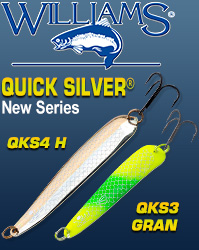DNR says proposed dam modifications must be studied carefully
|
By Mark Aquino, Department of Natural Resources, South Central Region Director |
FITCHBURG, Wis. -- The Prairie du Sac hydroelectric dam is operated by Alliant Energy under a license granted by the Federal Energy Regulatory Commission, or FERC, as the commission is commonly called.
Dams, like the one at Prairie du Sac, present a barrier to fish and other aquatic life attempting to move between waters below and above the dam. In 2002, FERC added an amendment to the dam’s operating license requiring Alliant to provide some method by which fish could safely pass the dam.
Fish passages can take a number of forms depending on the characteristics of the dam, the river and the species of fish present. Passages generally fall into one of two broad categories: those where fish can swim under their own power from one side of the dam to the other and those that involve capture and transport of fish from one side to the other. Capture and transport systems provide an opportunity to sort fish, allowing healthy native species to continue while others are not allowed to pass through.
The Department of Natural Resources recognizes the value to our native fish, including popular game fish and aquatic life, which would arise from connecting waters above and below the dam. Many fish and aquatic organisms migrate up and down the river as part of their life history, moving to spawning, feeding and resting habitats throughout the year. However, we also must be concerned about the potential for movement of harmful species and disease through any new fish passage.
Asian carp, an invasive species, and a deadly fish disease, viral hemorrhagic septicemia, or VHS, are a concern. Individual adult Asian carp have been found on occasion in the Wisconsin waters of the Mississippi River and in the lower Wisconsin River. While VHS is present in some Wisconsin waters it has not been detected in the Wisconsin or Mississippi rivers but remains a concern.
The presence of harmful aquatic invasive species and diseases in our state waters requires us to examine how we evaluate the benefits and risks associated with fish passages now and in the future. We are currently developing guidance for DNR staff tasked with evaluating fish passage projects.
Ultimately, the requirement for a fish passage at Prairie du Sac is up to the federal government. However, it is the DNR’s opinion that before a fully informed decision can be made, an objective and comprehensive risk-benefit analysis is needed of all feasible methods, including a no-passage option. The U.S. Fish and Wildlife Service is currently conducting this analysis.
As Wisconsin’s natural resource management agency, DNR has data and expertise on the Wisconsin River fishery, the waters of the Wisconsin River and information on the presence and distribution of aquatic invasive species and disease. The DNR is committed to full cooperation with the USFWS and Alliant Energy in completion of such an analysis.
In the end, it is our responsibility to manage our natural resources for the benefit of all Wisconsin residents. We look forward to working cooperatively with all parties involved in this evaluation.









